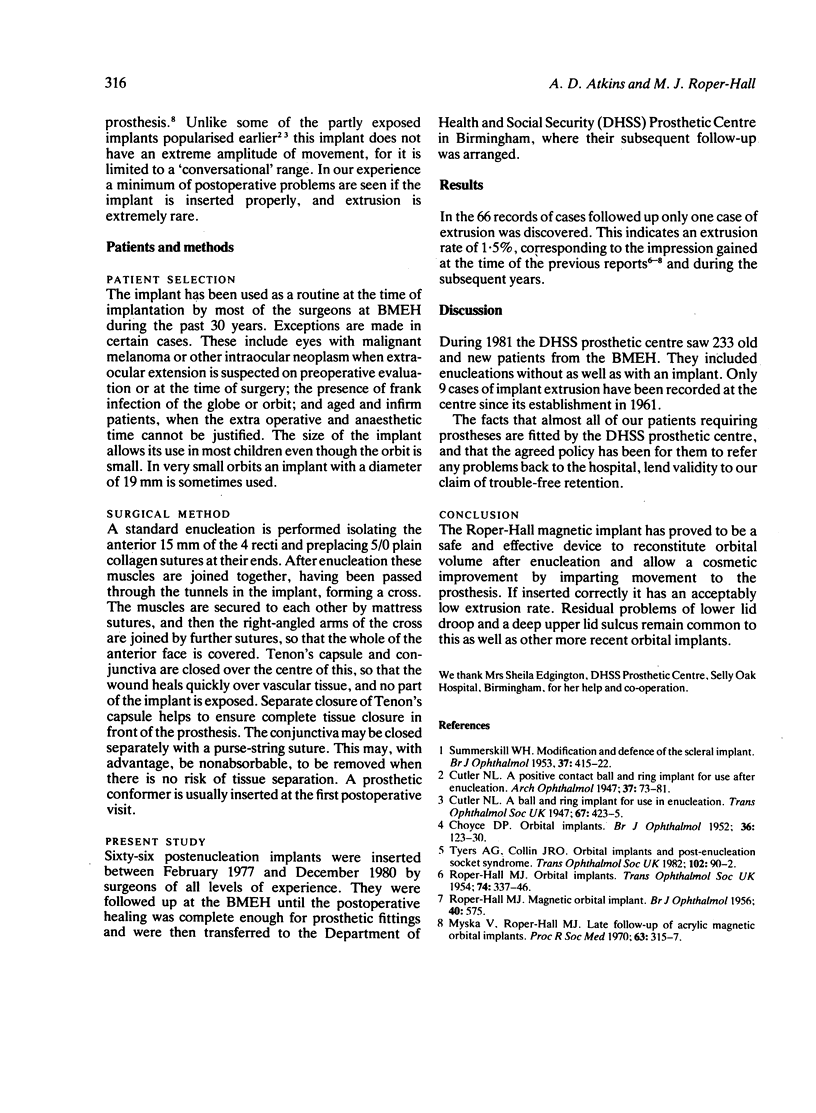Abstract
Sixty-six consecutive cases undergoing enucleation with the insertion of the Roper-Hall magnetic implant at the Birmingham and Midland Eye Hospital (BMEH) were followed up to re-establish the rate of extrusion. It was possible to study the records of all 66 patients. An extrusion rate of 1.5% was found.
Full text
PDF

Images in this article
Selected References
These references are in PubMed. This may not be the complete list of references from this article.
- CHOYCE D. P. Orbital implants; review of results obtained at the Moorfields, Westminster and Central Eye hospital, London. Br J Ophthalmol. 1952 Mar;36(3):123–130. doi: 10.1136/bjo.36.3.123. [DOI] [PMC free article] [PubMed] [Google Scholar]
- Myska V., Roper-Hall M. J. Late follow-up of acrylic magnetic orbital implants. Proc R Soc Med. 1970 Mar;63(3):315–317. doi: 10.1177/003591577006300348. [DOI] [PMC free article] [PubMed] [Google Scholar]
- ROPER-HALL M. J. Magnetic orbital implant. Br J Ophthalmol. 1956 Sep;40(9):575–575. doi: 10.1136/bjo.40.9.575. [DOI] [PMC free article] [PubMed] [Google Scholar]
- SUMMERSKILL W. H. Modification and defence of the scleral implant. Br J Ophthalmol. 1953 Jul;37(7):415–422. doi: 10.1136/bjo.37.7.415. [DOI] [PMC free article] [PubMed] [Google Scholar]
- Tyers A. G., Collin J. R. Orbital implants and post enucleation socket syndrome. Trans Ophthalmol Soc U K. 1982 Apr;102(Pt 1):90–92. [PubMed] [Google Scholar]



